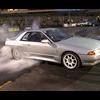Supercharging An Rb20det?
Announcements
-
Similar Content
-
Latest Posts
-
Yeah, unless you're doing it by the book, your data is probably not useful. Boiling point drops rapidly with only just a little water in it.
-
How hard are you tracking it? I have 378 in front and 355 in the back with decent pads and my brakes were spongy after a decent session with lots of braking. It was a short track though but got up to around 190-200 max. be keen to hear. Mind you, I havent flushed my fluid so thats probably part of reason.
-
By Papichulo96 · Posted
Awesome thanks for the reply Man! I already plugged up the back just cause I can’t take a chance on it leaking on me again haha. But i will fab a catch can with 2x for the cam covers and a lower one for the sump vent. Now as this will drain back as well , Is there any concern I should have of the oil being drained back. I don’t run e85 or anything . 2nd question is, from the picture does it seem that my sump fitting is above oil level? Silly question but I rather have someone’s experienced opinion lol -
How good is it though when you can run the AC without the engine running to cool the car off before you get in it during summer? God I'll miss a bunch of the EV features when it leaves on Monday
-
I hear you were headed for a track day yesterday... Thread clearly needs updates
-




Recommended Posts
Create an account or sign in to comment
You need to be a member in order to leave a comment
Create an account
Sign up for a new account in our community. It's easy!
Register a new accountSign in
Already have an account? Sign in here.
Sign In Now